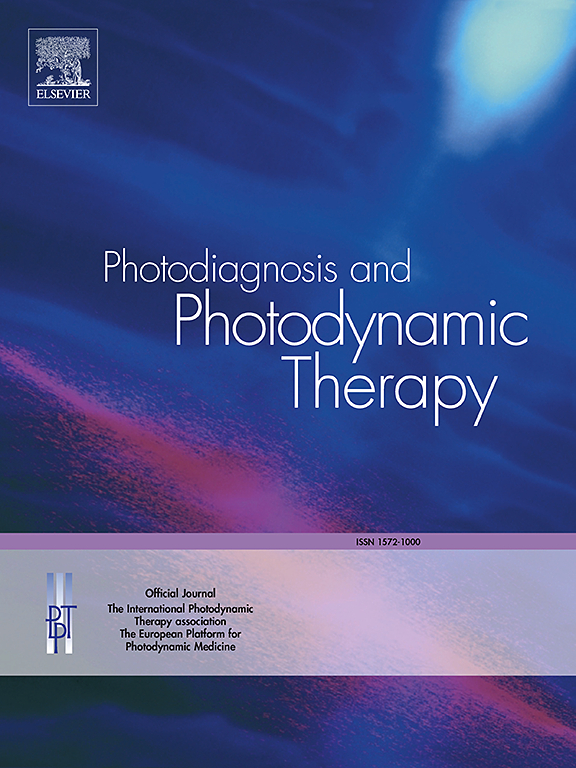解码帕金森病诊断:来自波斯队列研究的基于oct的可解释AI与SHAP/LIME透明度。
IF 2.6
3区 医学
Q2 ONCOLOGY
引用次数: 0
摘要
背景:由于主观临床评估和晚期症状表现,帕金森病(PD)的诊断仍然具有挑战性。视网膜光学相干断层扫描(OCT)生物标志物,反映神经退行性变化,提供了一种非侵入性诊断途径。本研究将视网膜OCT与可解释人工智能(XAI)相结合,以解决帕金森病诊断的不确定性。方法:利用波斯队列研究(202名PD患者,972名对照)的数据,我们开发了一个6层深度神经网络(DNN),结合OCT生物标志物(中央凹厚度和体积)和临床变量(运动评分,嗅觉功能障碍)。合成少数派过采样(SMOTE)减轻了班级失衡(PD:Healthy≈1:5)。通过SHAP(全局特征重要性)和LIME(局部解释)来确保模型的可解释性。结果:本研究建立了一个可解释的AI框架,将视网膜OCT生物标志物和临床数据结合起来诊断帕金森病(PD),准确率为95.3%,AUC-ROC为0.98。使用来自波斯队列(1176名参与者)的数据,该模型确定了SUPERIOR4厚度(0.15 mm³)作为关键的生物标志物,以及运动和嗅觉缺陷。结论:本研究为PD诊断开辟了一个透明的、基于oct的AI框架,强调通过视网膜神经变性模式进行早期检测。多模态数据的集成、可解释性和不平衡稳健性使其成为资源有限环境下的可扩展工具。未来的工作应该验证不同人群的生物标志物,并标准化OCT协议。本文章由计算机程序翻译,如有差异,请以英文原文为准。
Decoding Parkinson’s diagnosis: An OCT-based explainable AI with SHAP/LIME transparency from the Persian Cohort Study
Background
Parkinson’s disease (PD) diagnosis remains challenging due to subjective clinical assessments and late-stage symptom manifestation. Retinal optical coherence tomography (OCT) biomarkers, reflecting neurodegenerative changes, offer a non-invasive diagnostic avenue. This study integrates retinal OCT with explainable artificial intelligence (XAI) to address PD diagnostic uncertainties.
Methods
Leveraging data from the Persian Cohort Study (202 PD patients, 972 controls), we developed a 6-layer deep neural network (DNN) combining OCT biomarkers (foveal thickness and volume) and clinical variables (motor scores, olfactory dysfunction). Synthetic Minority Oversampling (SMOTE) mitigated class imbalance (PD:Healthy ≈ 1:5). Model interpretability was ensured via SHAP (global feature importance) and LIME (local explanations).
Results
This study developed an explainable AI framework integrating retinal OCT biomarkers and clinical data to diagnose Parkinson’s disease (PD) with 95.3 % accuracy and 0.98 AUC-ROC. Using data from the Persian Cohort (1176 participants), the model identified SUPERIOR4 thickness (<120 µm) and foveal volume expansion (>0.15 mm³) as key biomarkers, alongside motor and olfactory deficits. SHAP/LIME provided interpretable thresholds (e.g., SUPERIOR4 <120 µm = high risk), while SMOTE mitigated class imbalance, reducing false negatives by 12 % without compromising specificity (94.8 %).
Conclusion
This study pioneers a transparent, OCT-based AI framework for PD diagnosis, emphasizing early detection through retinal neurodegeneration patterns. The integration of multimodal data, explainability, and imbalance robustness positions it as a scalable tool for resource-limited settings. Future work should validate biomarkers across diverse populations and standardize OCT protocols.
求助全文
通过发布文献求助,成功后即可免费获取论文全文。
去求助
来源期刊

Photodiagnosis and Photodynamic Therapy
ONCOLOGY-
CiteScore
5.80
自引率
24.20%
发文量
509
审稿时长
50 days
期刊介绍:
Photodiagnosis and Photodynamic Therapy is an international journal for the dissemination of scientific knowledge and clinical developments of Photodiagnosis and Photodynamic Therapy in all medical specialties. The journal publishes original articles, review articles, case presentations, "how-to-do-it" articles, Letters to the Editor, short communications and relevant images with short descriptions. All submitted material is subject to a strict peer-review process.
 求助内容:
求助内容: 应助结果提醒方式:
应助结果提醒方式:


